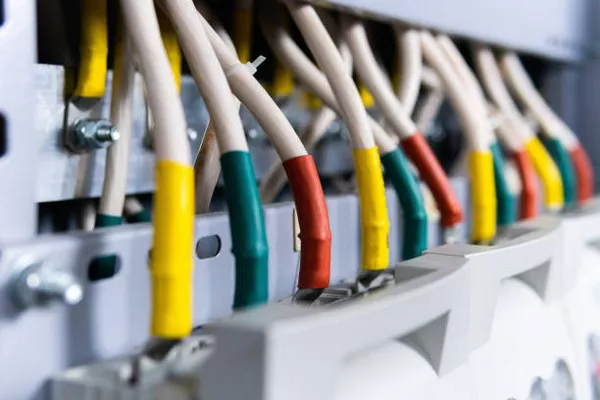Electrical transformers play a pivotal role in the efficient distribution of electrical power across various applications, from residential to industrial settings. These devices serve as indispensable components in power systems, facilitating the transmission of electricity at different voltage levels. In this article, we will delve into the intricacies of how electrical transformers work, exploring the step-by-step process that enables them to fulfill their crucial function.
Step 1: Basic Components and Construction:
The fundamental structure of an electrical transformer comprises two main components – the primary winding and the secondary winding – both typically wound around a laminated iron core. The core’s material, often laminated to reduce eddy current losses, enhances the transformer’s magnetic properties. The primary winding receives electrical power input, while the secondary winding delivers the transformed output.
Step 2: AC Power Input:
Transformers operate exclusively with alternating current (AC) as their input source. AC is preferred due to its ability to undergo easy voltage transformation through electromagnetic induction. As the AC current flows through the primary winding, it establishes a magnetic field around the iron core.
Step 3: Magnetic Induction:
The interaction between the alternating current in the primary winding and the iron core induces a magnetic field. According to Faraday’s law of electromagnetic induction, a changing magnetic field within a coil induces an electromotive force (EMF) in any adjacent coil. In the case of a transformer, this induced EMF occurs in the secondary winding.
Step 4: Voltage Transformation:
As the magnetic field builds and collapses with the alternating current, it causes a corresponding voltage to be induced in the secondary winding. The ratio of turns between the primary and secondary windings determines the voltage transformation. If the secondary winding has more turns than the primary, the voltage is stepped up; conversely, if there are fewer turns, the voltage is stepped down.
Step 5: Current Transformation:
Simultaneously, the alternating current induces a current in the secondary winding. The relationship between the primary and secondary currents is inversely proportional to the voltage transformation. If the voltage is stepped up, the current is stepped down, and vice versa, maintaining the conservation of power.
Step 6: Magnetic Flux and Core Saturation:
During the process of voltage and current transformation, the iron core plays a crucial role in concentrating the magnetic flux. However, there is a limit to the magnetic flux the core can accommodate before reaching saturation. Saturation occurs when the core becomes magnetically saturated, limiting further magnetic field strength and potentially causing undesirable effects such as increased heat and energy losses.
Step 7: Efficiency and Losses:
Transformers are designed to operate with minimal energy losses, ensuring efficiency in power transmission. However, no transformer is perfectly efficient, and losses occur in the form of core losses (hysteresis and eddy current losses) and copper losses (resistive losses in the windings). Engineers must carefully consider these losses during the design phase to optimize transformer performance.
Step 8: Cooling Systems:
To mitigate losses and maintain optimal operating temperatures, transformers often incorporate cooling systems. Common cooling methods include oil-immersed systems, where the transformer is submerged in oil to dissipate heat, and forced air or water cooling systems. These mechanisms prevent overheating and contribute to the transformer’s longevity and reliability.
Step 9: Tap Changers and Voltage Regulation:
Some transformers feature tap changers, allowing for adjustment of the transformer’s turns ratio and consequently the output voltage. This flexibility ensures that the voltage delivered to the load remains within specified limits, compensating for variations in the input voltage or changes in load conditions.
Step 10: Applications and Importance:
Transformers are ubiquitous in power distribution networks, stepping up voltages for efficient long-distance transmission and stepping down voltages for safe consumption in homes and businesses. They are also essential in industrial settings, where specific equipment may require different voltage levels. The versatility and reliability of transformers make them indispensable components in the modern electrical infrastructure.
See Also What Is A Buck Boost Transformer Used For
Conclusion:
Understanding the step-by-step operation of electrical transformers reveals the complexity and precision involved in their design and functionality. From the basic components and construction to the intricacies of magnetic induction and voltage transformation, each step contributes to the transformer’s ability to efficiently and safely transmit electrical power. As technology advances, transformers continue to evolve, meeting the growing demands of a dynamic and interconnected electrical grid.

